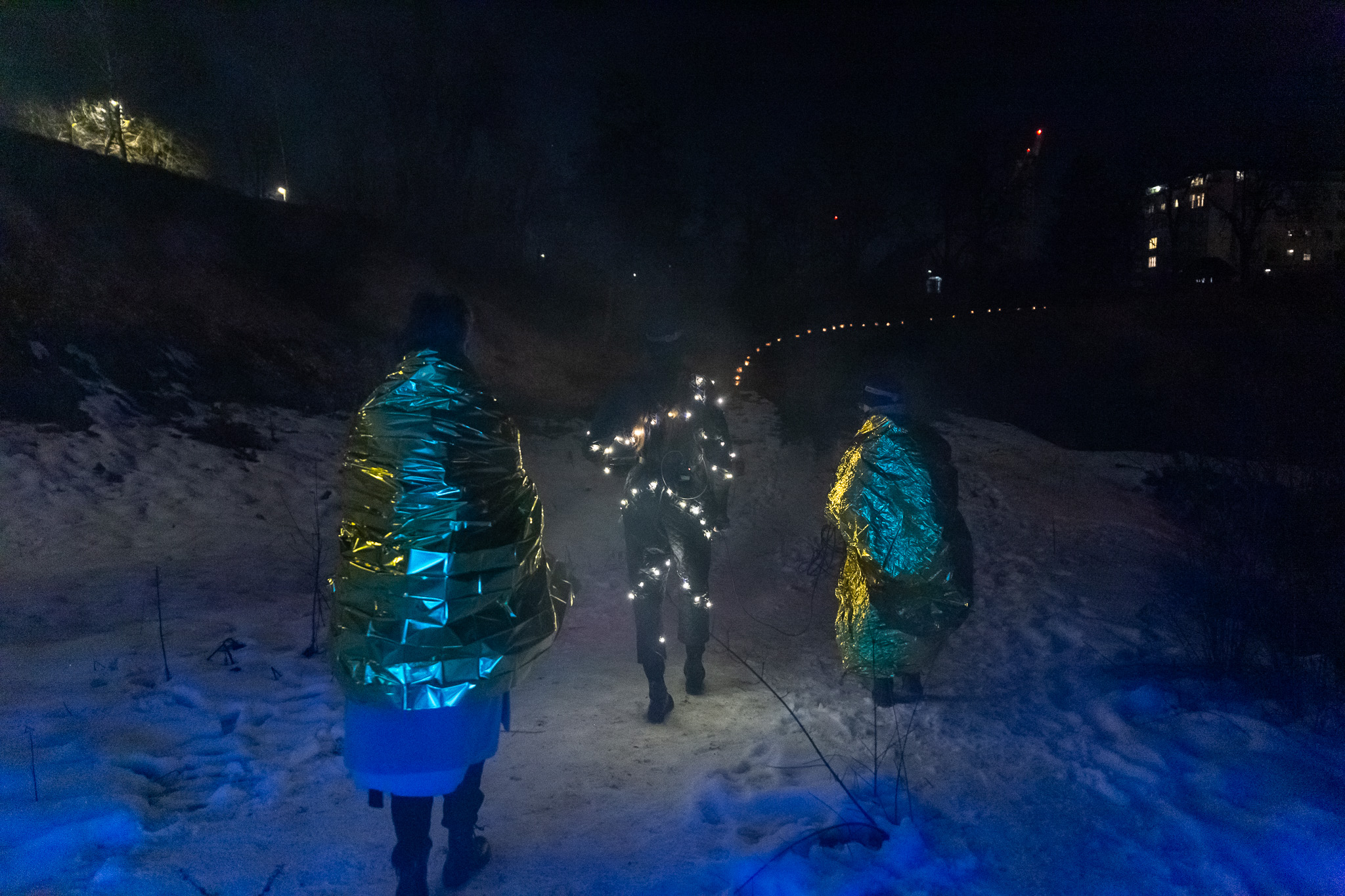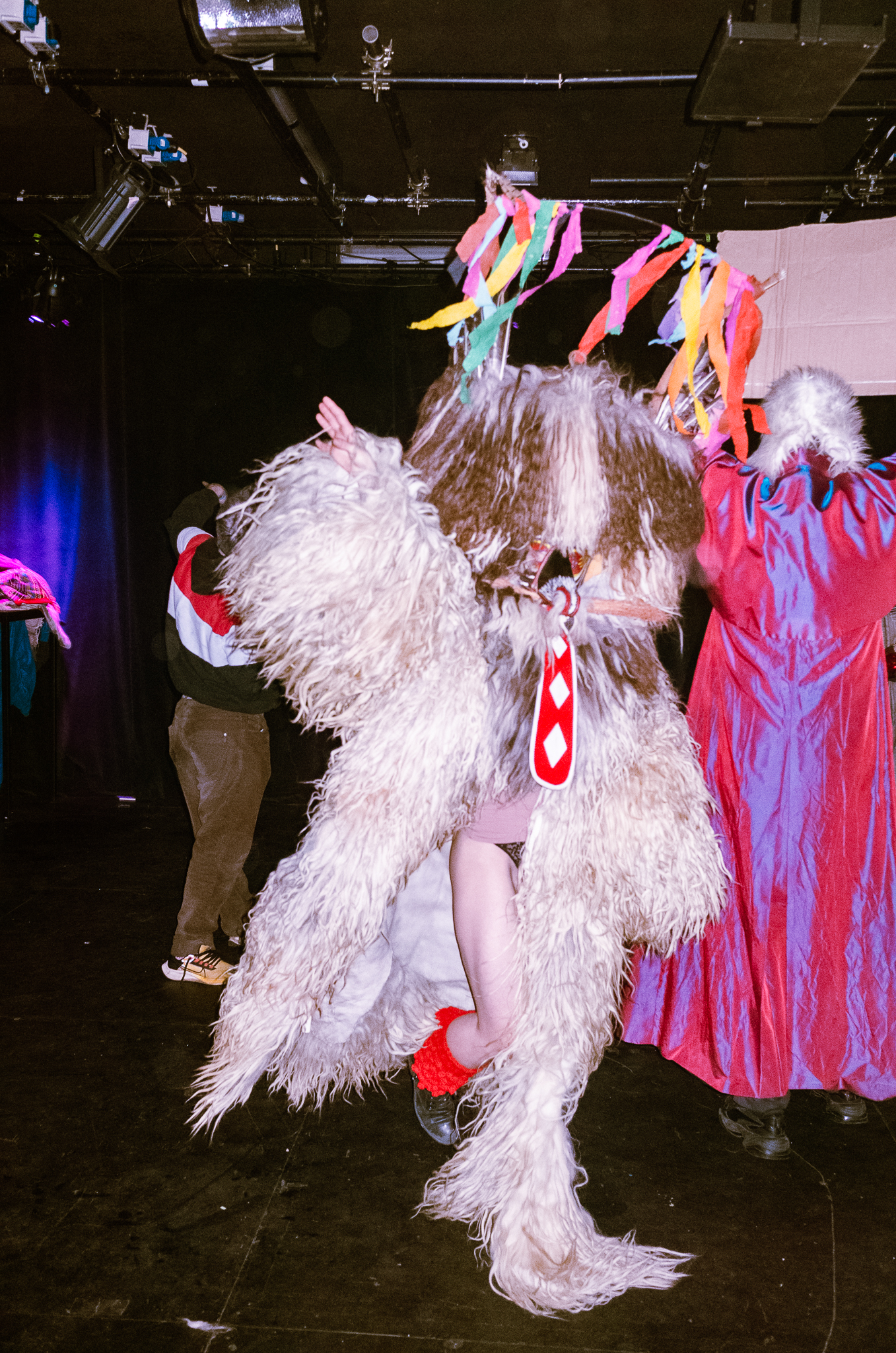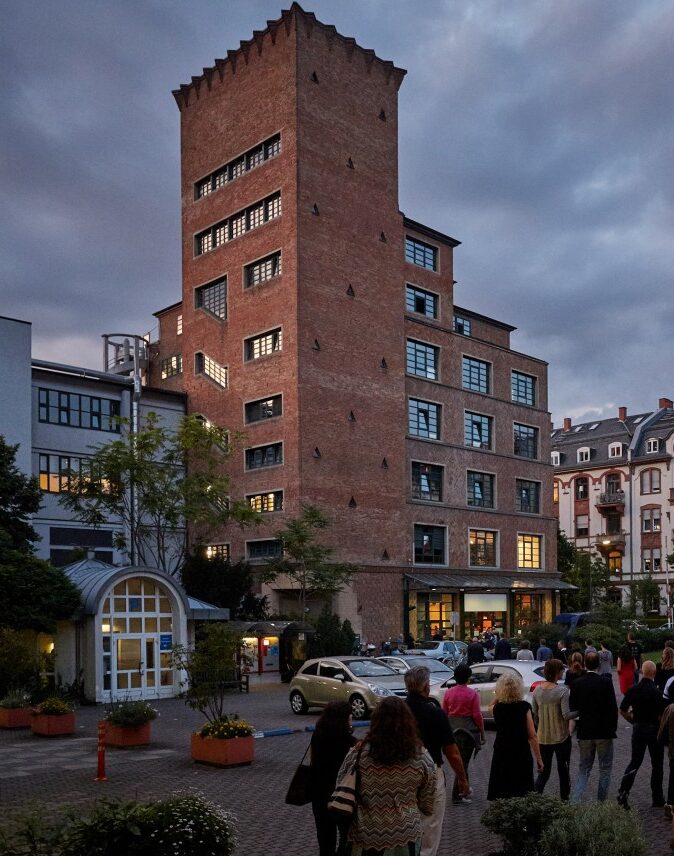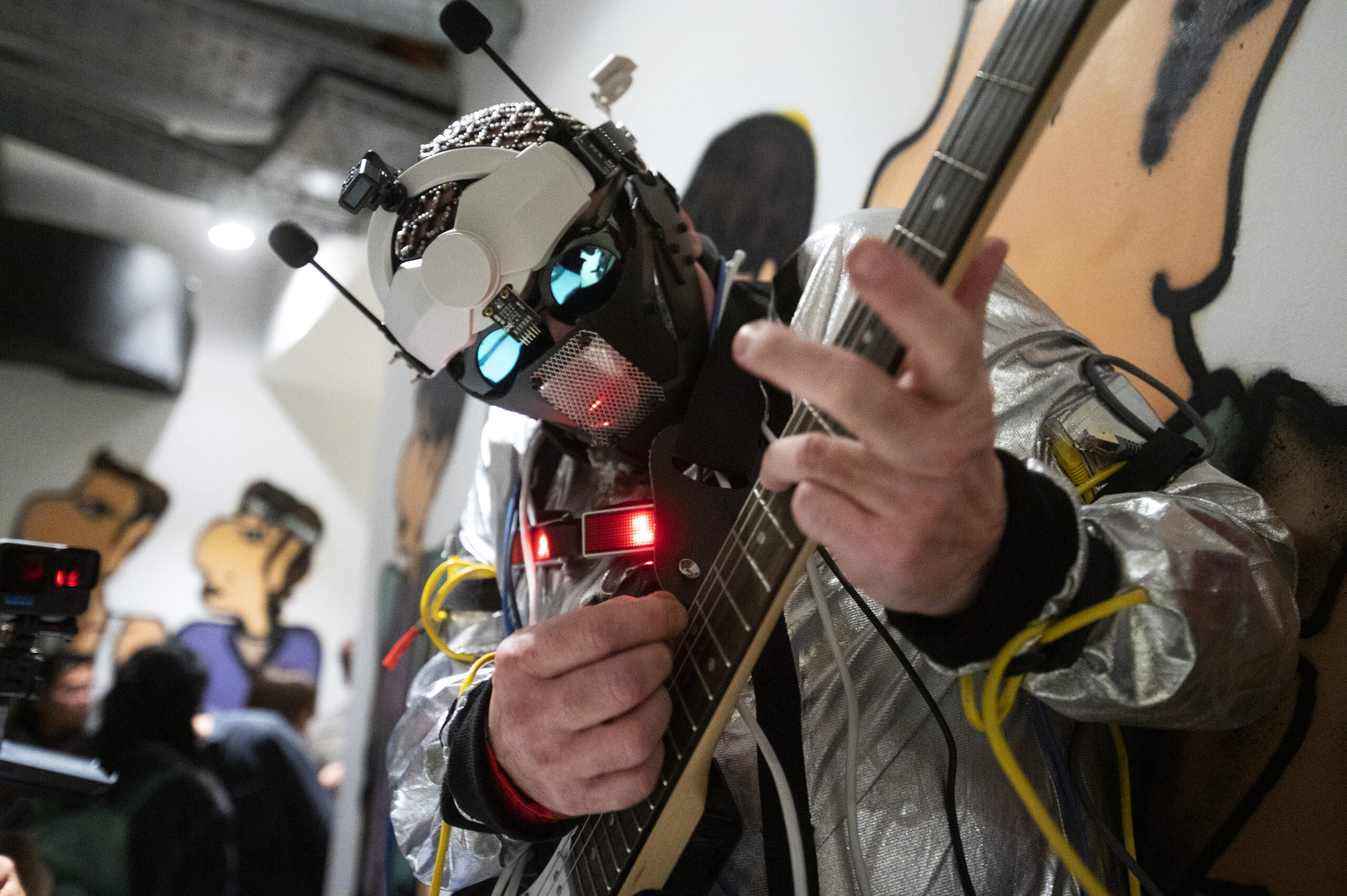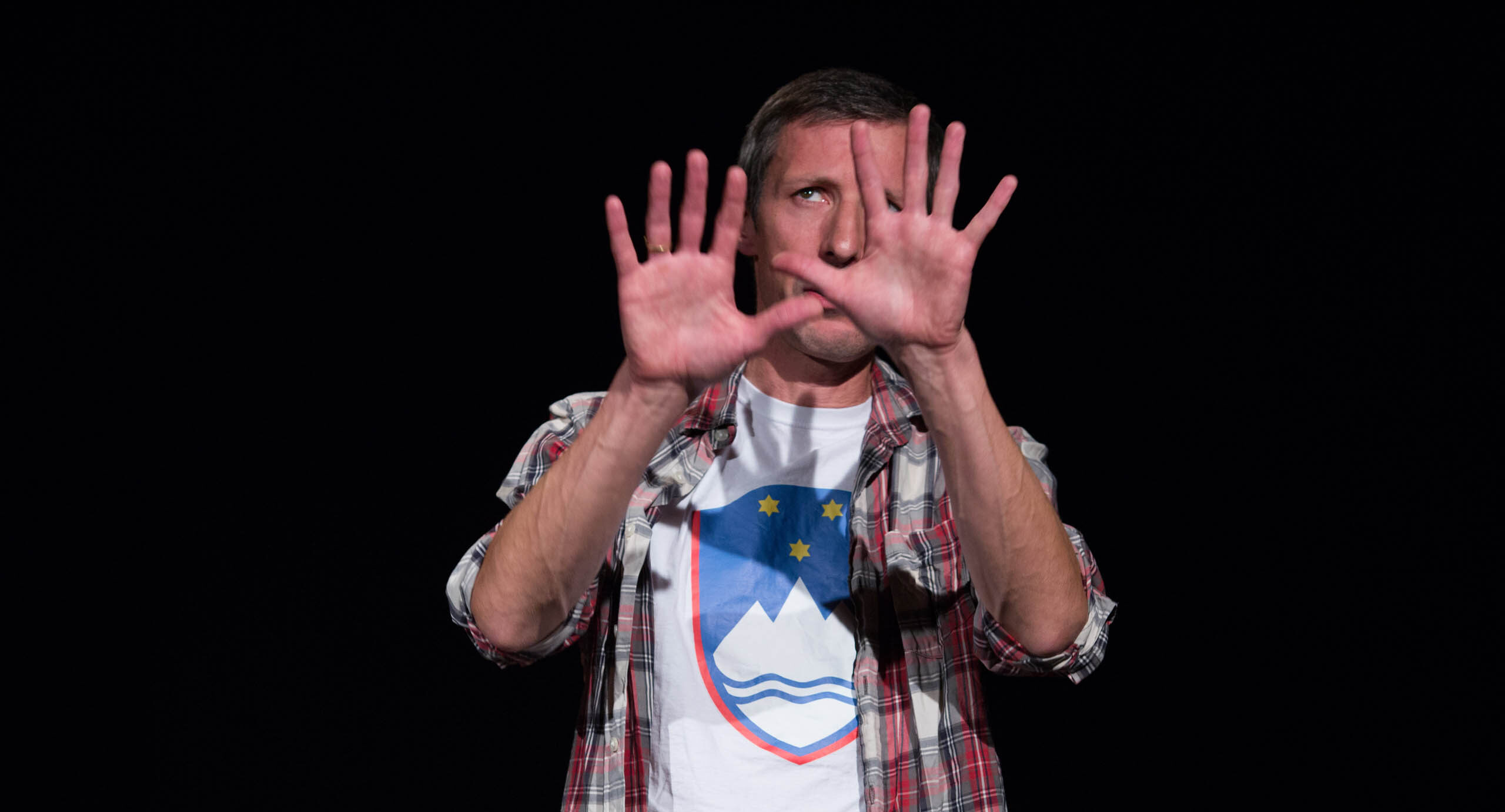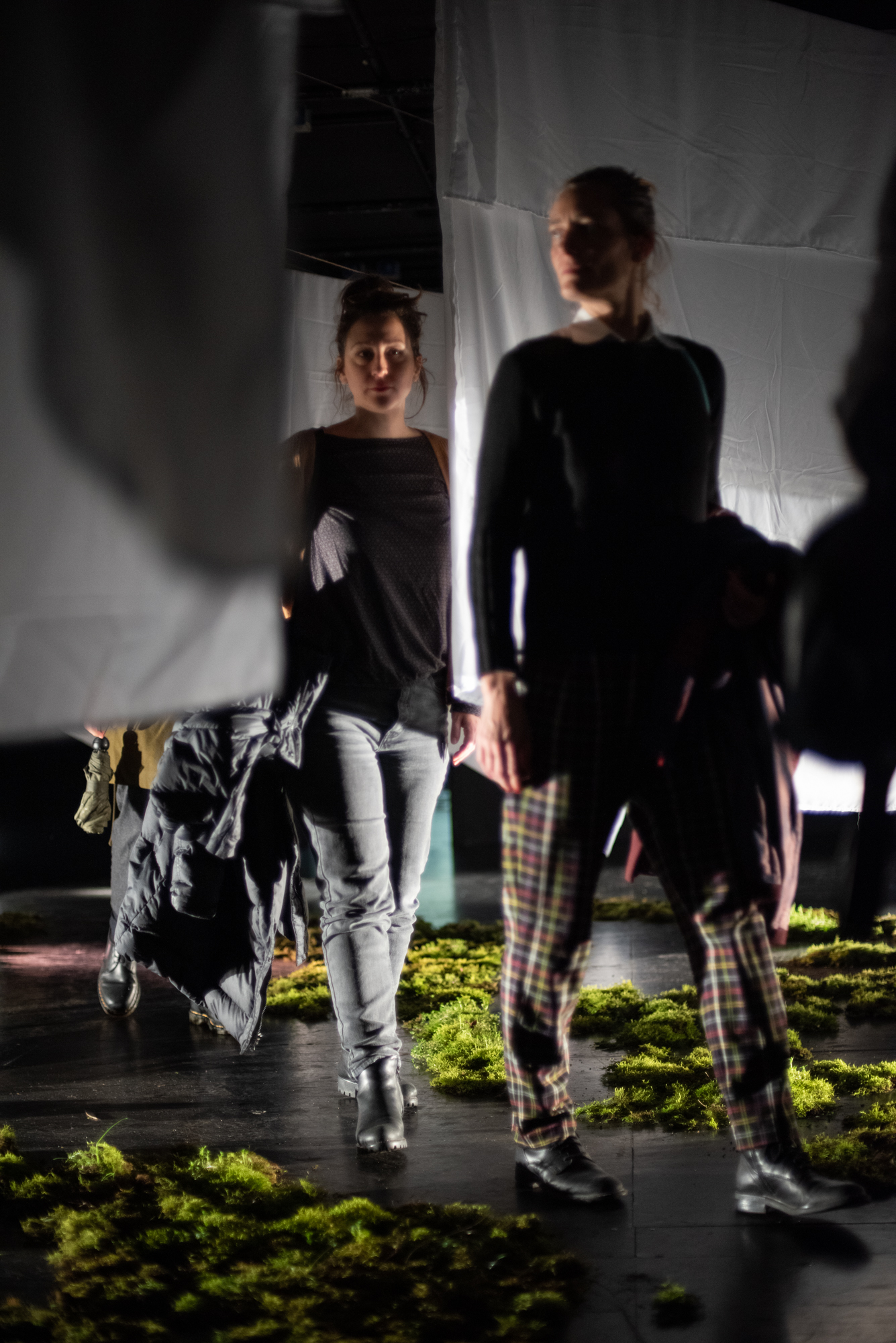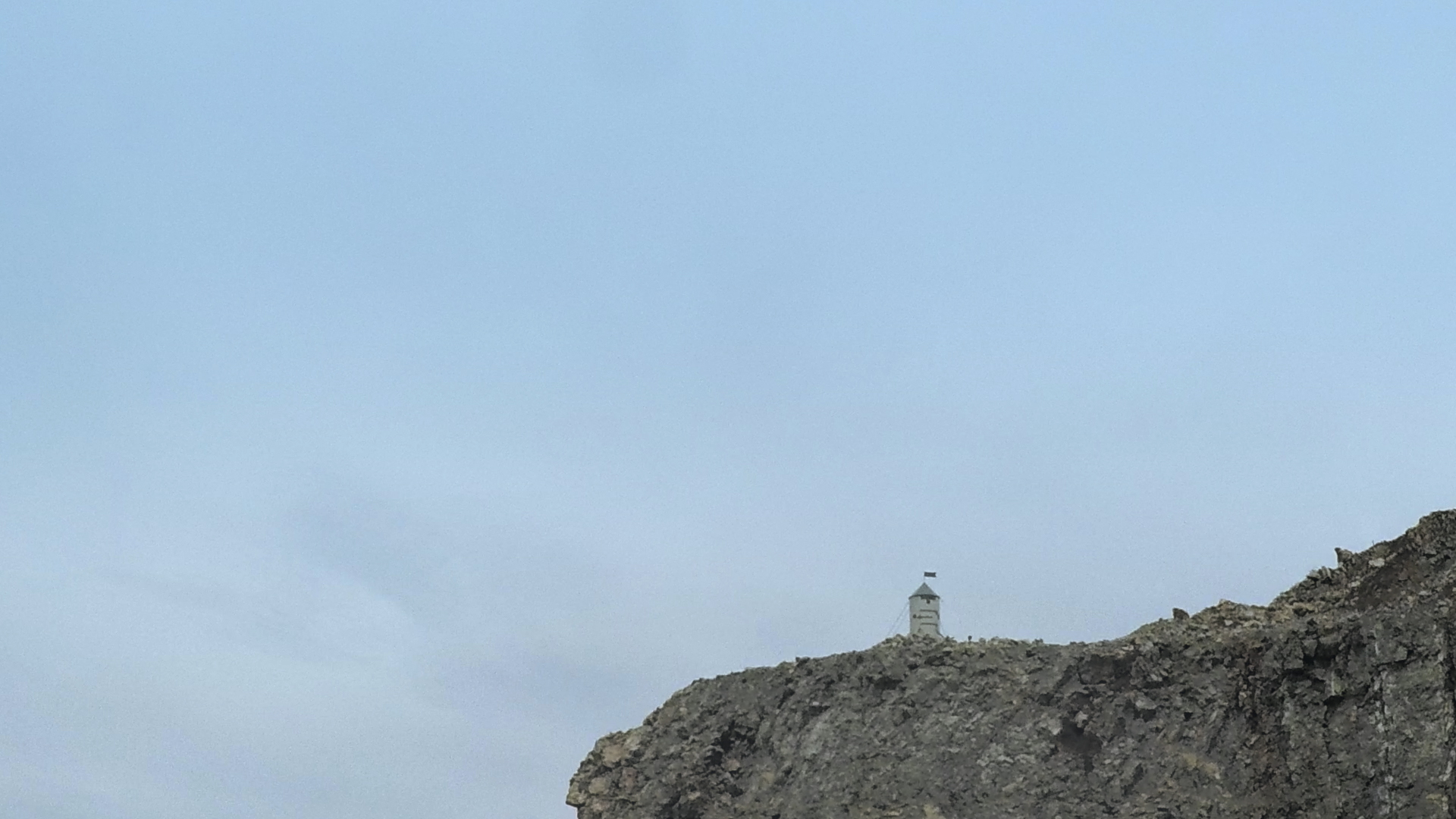Goran Bertok: The End, First Rehearsal

»Whatever will I create in seventeen years’ time?”, Goran Bertok asked himself in 2006, because already then he was out of ideas. This reminded him of the question we used to ask each other: What would you do if you found out that you were living the last day of your life (2023 seemed so far away at the time, as if it existed only hypothetically …). We usually let our imagination run wild in answering this question, listing all the possible – great and crazy – endeavours that we could not and would not be able to do in our real lives. But Bertok’s brother’s short answer was that he would go to sleep. In his view, anything else would be pointless, as it was all over anyway. In the style of his brother, the author decided to die (Death Certificate) in the course of seventeen-year project. Seventeen years have passed in a flash, and we find ourselves in the year 2023.
- TUESDAY, 26. 9. 2023, 21.00, Old Power Station – Elektro Ljubljana
Exhibition
Author: Goran Bertok / www.bertok.si
Processing of the urn: Boštjan Štine
Uroš Potočnik: speech
Uroš Sever: improvisation à la Monk
3D model: CG Trader
Production: Maska Ljubljana
Acknowledgements: TEM Čatež (3D printing), Cveto Kunešević, Tomo Per, Domen Kokalj
Kaja Kraner
What is the time of death, when dying is regarded as a performance? To begin with, death as such could be considered as having (at least) a double temporality: one belonging to the biological and the other to the social order. Social death depends on the incorporation of the biological order in the social order and discourse and, as such, also becomes situated in history. Biological death must be identified, recognised and declared; it must acquire its space and time through a performative action. A performance as a tool of operation and change of the current state of affairs through the act of naming is mostly about changing the relationship between the interlocutors and, in order to be successful, presupposes an authority (an official with the power to declare a death and sign a death certificate) and recognition from the addressee.
When death is incorporated in the social order and discourse, for example by way of a perfomance, it (at least) doubles and acquires additional aspects that certainly should not be reduced to an objective determination of biological matter. One of the most obvious demonstrations of this is the expression “I am going to kill myself”, which reveals a rift between the subject of the utterance, action and decision, and someone who can be reached by this action and who, in turn, changes it into something radically different, undoubtedly the opposite of the ability to control oneself. In short, there is a death beyond a definable event of life leaving the biological body, and a death that – in the words of Maurice Blanchot – “flows through words of possibility and freedom, its outermost horizon being the freedom of death and the strength of risking death” (2012: 101). In other words: there is an imageless death and a multitude of different images of death, e.g., a death that is larger than death, or a death worth dying.
In his past work, Bertok also focused on portraying bodies on the border between life and death (in the photography series Hunger) and dead bodies (in the series Visitors and Post Mortem), thereby unveiling additional images of death of lesser narrative/literary value: an impersonal, anonymous and alienated death; death as a decomposition of matter; the monuments of death and the beauty of a dead, decomposing body. The artist’s version of the work in the Maska 2023 project from 2006 was first entitled Death Certificate Gc2 – 29966, showcasing the bureaucratic and administrative realisation of his own death functioning as a performance carried out by the appropriate authority. In contrast, his 2023 work shifted from death as a speech act (i.e., the declaration of a social death) to the time after death: death assumed a cultural and conventional representation of body remains or biological matter. The transformation that the project has seen since its initial 2006 concept until today can also be considered in the light of changes to the way life has been viewed in the last 20 years, as well as in the light of the recent, recurrent representations of dystopic and eschatological imageries. But instead of affording insight into the period “after” (death/the end of time/history), which by definition cannot be accessed, instead of the more “positive” tendency to recycle human biological matter as a potential resource in the circumstances of the threat of extinction (postponing the end), Bertok seems to bet on the affirmation of the end before extinction, be it for accelerationist or nihilist reasons.







